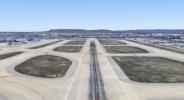12 זענען אומגעקומען פון א UPS טרעקל אויפרייס


KHOU 11 meteorologist Pat Cavlin provided an in-depth analysis of the final moments leading up to the deadly UPS cargo plane crash that claimed at least twelve lives and injured nearly twenty others on Tuesday in Louisville, Kentucky. The incident has shaken both the aviation industry and the local community, marking one of the deadliest air disasters in recent years.
According to Cavlin, early data indicates the aircraft encountered severe instability shortly before impact. Weather conditions in the area included strong crosswinds and low visibility, factors that may have played a critical role in the crash. The UPS flight, en route to a major distribution hub, went down moments after takeoff before erupting into a massive fireball that lit up the early morning sky.
Witnesses reported hearing a loud explosion followed by a series of smaller blasts as the plane’s cargo ignited. Emergency crews rushed to the scene, but the intensity of the fire made rescue operations extremely difficult. The National Transportation Safety Board (NTSB) has since launched an investigation into the cause of the disaster, focusing on potential mechanical failures and weather interference.
Cavlin’s breakdown on KHOU 11 emphasized the complexity of the situation, explaining that even with advanced technology and rigorous safety standards, a combination of environmental stress and technical malfunction can lead to catastrophic outcomes. His expert commentary shed light on the timeline of events, helping the public understand how quickly conditions can deteriorate during takeoff.
Louisville officials have extended condolences to the victims’ families, while UPS expressed “deep sorrow” over the loss of life and pledged full cooperation with investigators. As recovery efforts continue, the tragedy serves as a stark reminder of the unforgiving nature of aviation accidents and the importance of ongoing improvements in flight safety and weather monitoring.
גאלערי
ווידעאס